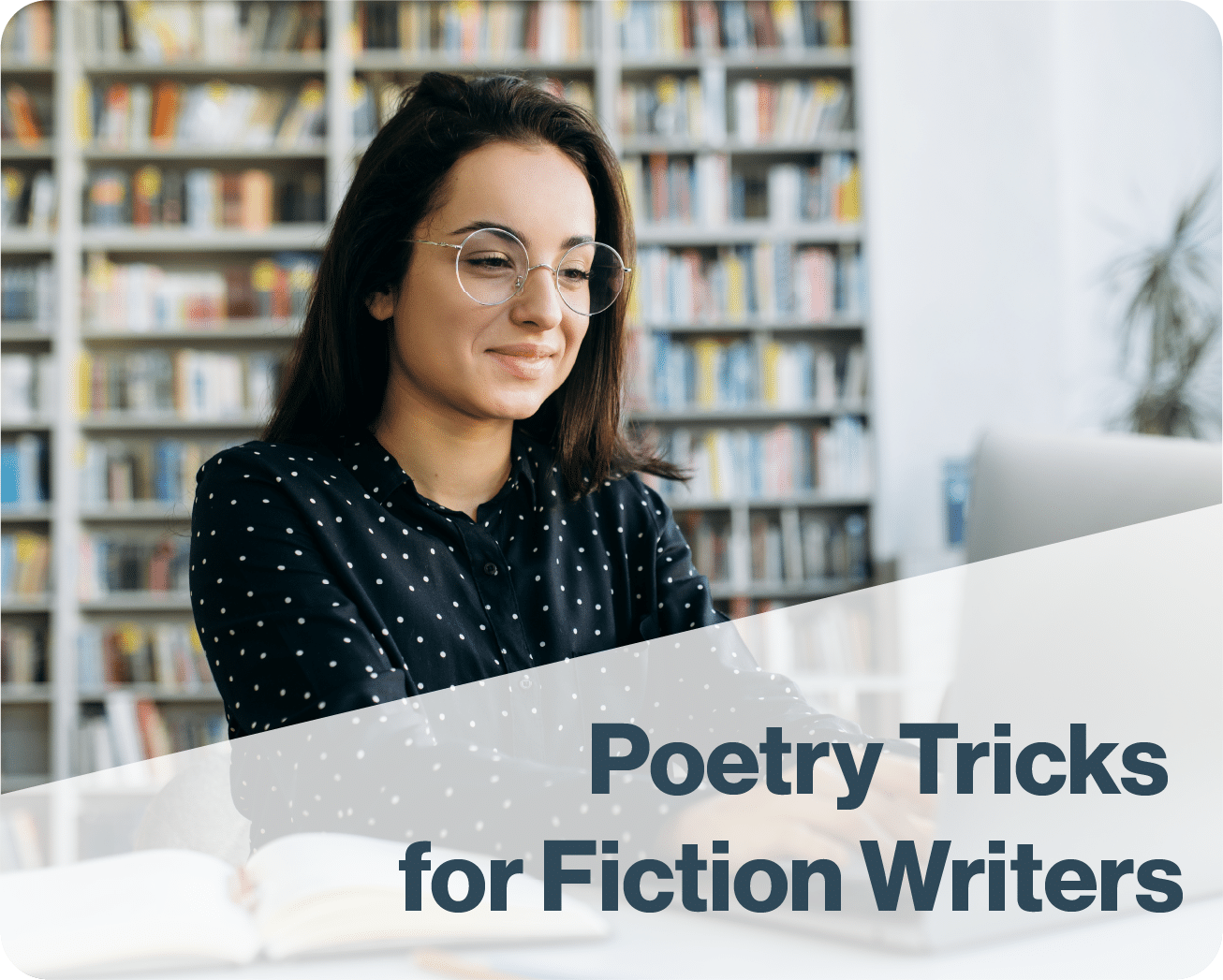Poetry Tricks for Children’s Authors
Published on 06/11/2023Poetry Tricks for Children’s Authors
Teacher: Lil Chase, senior editor at Caroline Wakeman Literary Agency
I would not advise people to use flowery prose when writing for children. In general, it’s best to speak plainly and let the action tell your story. However, studying the tricks used in poetry is a really good way to learn how to use language effectively.
1. Use imagery to convey mood. This is essentially, Show, don’t tell (which we talk about in another post). Describe an image, using simple but concrete language, and let that image convey a mood. Think of the visual of the floating plastic bag in the film American Beauty (1999) – it was so melancholy… but it was just a plastic bag!
2. Think about how to use line breaks, punctuation, and even capital letters for dramatic effect: ‘He turned to me, took my hand and we ran,’ could have more emphasis if it was written.
He turned to me and took my hand.
We ran.
Or even:
He turned to me.
He took my hand.
We ran.
3. Poets think of the ‘white space’ on the page. Words are most important, but the white space around the words plays a part too. It helps if a page is pleasing to look at.
4. Identify the word with the most punch and end the sentence with it.
Should be:
The last word of a sentence should pack the most punch.
5. In poetry, ‘less is more’. Consider every word in every sentence: can you substitute a word for one that’s more powerful? Can you find a way to say something with fewer words, but more impact?
Sarah Crossan is an example of an author who has written many books for children in poetry form. I’m not suggesting you write your book in verse, but take a look at her work and see how she uses her poetry skills to great story-telling effect, and try some of these tricks in your next story.
For more free tips for how to improve your writing for children’s books subscribe to our ITSme Learning Newsletter!
Other News
What Happens in an ITSme Mentorship? A Week-by-Week Breakdown
Imagine having a guide who not only understands the creative path an individual wants to walk, but also has the knowledge and tools to help them get there – successfully. That’s the core of the ITSme Learning Mentorship. Whether someone is a student, a young professional at the beginning of their career, or an artist…
Announcing Our Very First Picture Book Course!
We are extremely excited to announce our first picture book class and mentorship program, in a collaboration between Caroline Wakeman Literary Agency and multi-talented author-illustrator Sally Anne Garland. Your Picture Book Journey: How to Write and Illustrate Your Own Picture Book is a 12-week course for writers, illustrators, and visual storytellers ready to bring their…
Why Every Illustrator Portfolio Needs a Stand-Out Character (Yes, Even Yours)
When you’re thinking about our favourite stories as a child, we often think about the narrative, the themes, perhaps a particular quote that stood out, but the most memorable elements are always the characters. The reason the characters always stay in our minds is because they are the gateway to the narrative, and all of…
Trend Watch: YA Illustrated Covers
Over the past few years, illustrated covers have become a defining visual language in the Young Adult (YA) and New Adult (NA) book market. And no, this isn’t just a passing trend—it’s a design evolution powered by the viral force of #BookTok, #bookgirlies, and a growing appetite for genre-fluid storytelling. Hear what’s driving the…
Trend Watch: The Graphic Novel Boom
Every week we’ll be featuring a new article over on LinkedIn, in our new trend watch series! Graphic novels are having a moment—and it’s no passing trend. From classrooms to bestseller lists, graphic novels are dominating shelves and reading time across all ages. What was once seen as a niche format with a distinct, heavy-lined “comic book”…
Bologna 2025: A Week of Connection
By: Vicky Patoulioti, Talent Source Manager, ITSme This year’s Bologna Children’s Book Fair was one to remember. From early mornings to late evenings, our team Vicky, Bhavi, Ed, and Emily — were on the ground offering free portfolio reviews to artists from all over the world. Mornings kicked off with pre-scheduled reviews, while in the…




